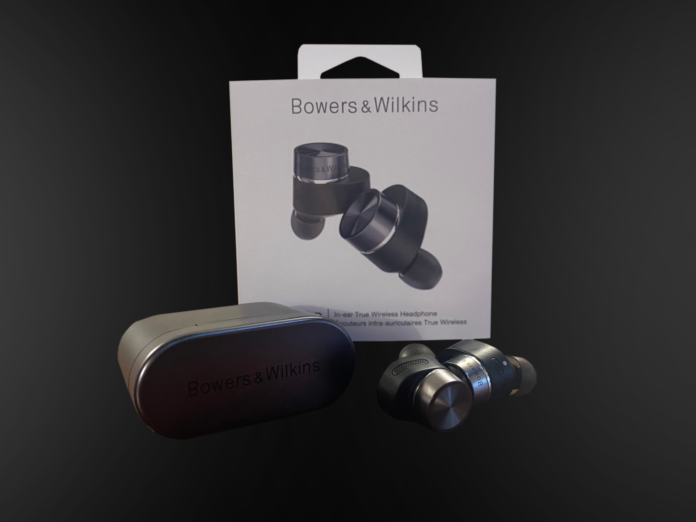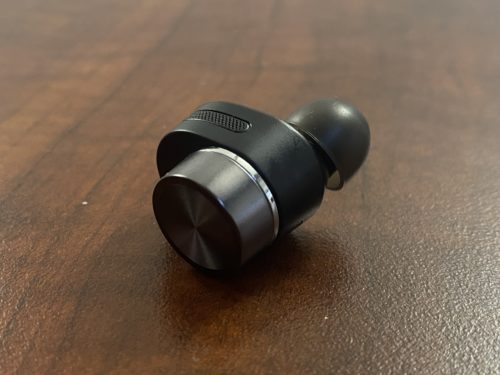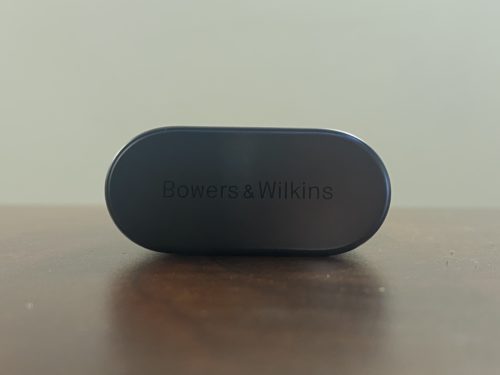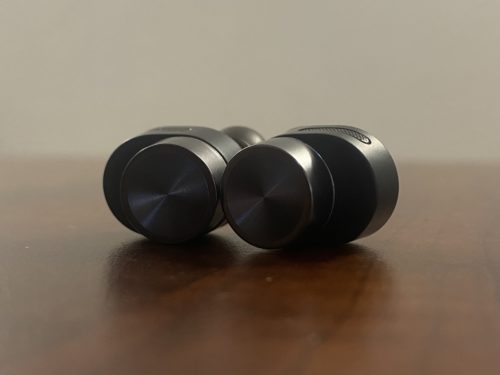Over a year ago, Bowers & Wilkins introduced two new true wireless earbuds, the PI5 and PI7. They both offered different sonic profiles and came with similar designs and features. The PI7 was pushed as their new flagship true wireless earbud, with a price that matched it. Now, B&W is continuing that series with the new PI7 S2. With this new version of the PI7, B&W hopes to bolster performance even more, with better sound and Bluetooth connectivity. The asking price of $399 seems like a bit much for a pair of true wireless earphones, so let’s see if B&W can justify it.
What You Get
- PI7 S2 earbuds
- Charging case
- Type C charging cable
- 3.5mm to USB Type C cable
- S/M/L ear tips
Look and Feel
The PI7 S2 features a new blue coloration, but the one I will be reviewing is the one in black. In the blue color, the PI7 S2 looks more elegant but still looks classy in black. Otherwise, this new PI7 doesn’t feature much difference from the old one. It’s a great design so I can see why they wanted to keep it. It feels like they got it right the first time so why change anything to its build? That also means the same goes for fit. Like the original PI7, the S2 fits best when you give it a little twist in your ear. It makes the seal stronger and they’ll fit more naturally.
Design and Functionality
With the S2, the similarities don’t stop with the style of the earbuds, the inside housing shares many similar components too. The 9.2mm dynamic driver and balanced armature return here to give a stronger edge to its sound, bringing fidelity more into focus. These similarities start to become one too many though, seen most in the mostly unchanged companion app. The number of features here is very limiting, not even offering an EQ or customizable controls. ANC quality also doesn’t receive much of an upgrade, with the S2 only offering the same average level of isolation as the last iteration. In terms of usability though, the touch sensors have better feedback, and can even be quite sensitive.
Bluetooth
Not much is upgraded in terms of Bluetooth either, as the S2 still supports Bluetooth 5.0. You do get better range and aptX CODECs though, and the connection is still very stable.
Battery Life
If you’re looking for a big upgrade in terms of battery life, the PI7 S2 won’t be the most impressive. You’ll get five hours of playtime off of a single charge, and 16 hours total from the case. This doesn’t seem like much of an upgrade to me, as there are true wireless earbuds out there that offer a better battery life for way less than the S2.
Soundstage
Bluetooth headphones have gotten quite good at sound staging, especially with these higher-end models that have been coming out recently. B&W products like the PX7 S2 and PX8 and good examples of this, and was excited to hear if that same spatial imaging can make its way to true wireless. For the most part, I think that’s true for the PI7 S2. The stage here is very wide, almost shoulder width actually. It gives spatial accuracy to the left and right channels really well and makes the performances feel nice and big. The tallness of the sound elements is considerable but not the biggest standout of the soundstage. What does showcase itself is the depth of the soundstage. Instruments and vocals are forward-facing and it opens up the headspace of the S2 quite a bit.
Low End
Like the original PI7, the S2 comes with a strong helping of bass. Its impact is deep and it comes down quite hard. You get a thick tone that always appears pooled around your jawline. The frequencies take up quite a large amount of space in the mix, and it brings a lot of force to the timbre with sub-bass clarity and mid-bass punch working in tandem to deliver maximum engrossment.
Mids
Many instruments felt surprisingly well-defined in the midrange. There’s a cleanliness to the timbre that excites the frequencies enough to feature some interesting details for a truly wireless earphone. The low mids do take up a significant amount of space in the frequency response, and can sometimes overshadow these details. When you’re not dealing with a bass-focused track though, the mids showcase some resolving notes and individuality. The vocals are particularly crisp.
Highs
There is definitely more high-frequency presence here than in the original model. Certain instruments will have more of a clickiness to them, like thin, delicate tones that add more air to the sound signature. These frequencies are not overly extended though, as the S2 still keeps the level of brightness relatively tame. Nothing feels rolled off, and the frequencies feel like they’re resonating naturally without calling a significant amount of attention to themselves.
Summary
So, what it seems like is the PI7 S2 is an upgrade to pretty much sound quality only. Everything about the sound signature is better than the original but doesn’t add much of anything in the way of features and technical improvements. Some similarities like drivers and build are welcome to stay the same, but a new true wireless earbud using Bluetooth 5.0 doesn’t make it feel like a current product. When you consider the price, these issues become a lot more prevalent. However, if you’re just in it for the sound, then the PI7 S2 will definitely be a satisfying upgrade.
| Pros | Cons |
|
|
The Bowers & Wilkins PI7 is available at Audio46.
Compare the ranking of various headphones, earbuds and in-ear monitors using our tools.
Discuss this, and much more, over on our forum.
---MAJORHIFI may receive commissions from retail offers.


















